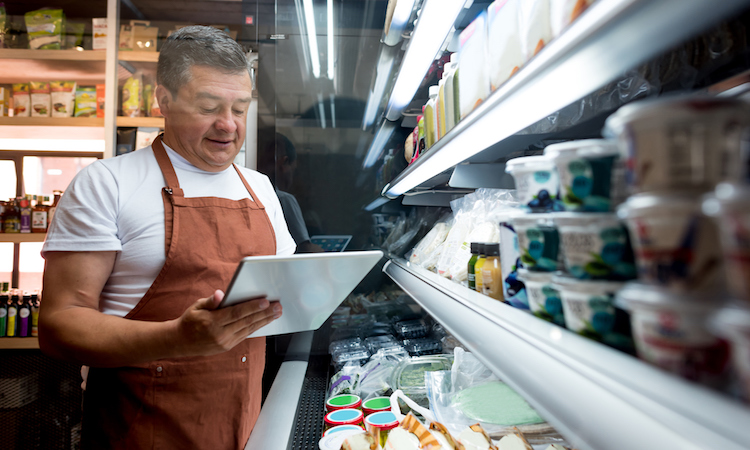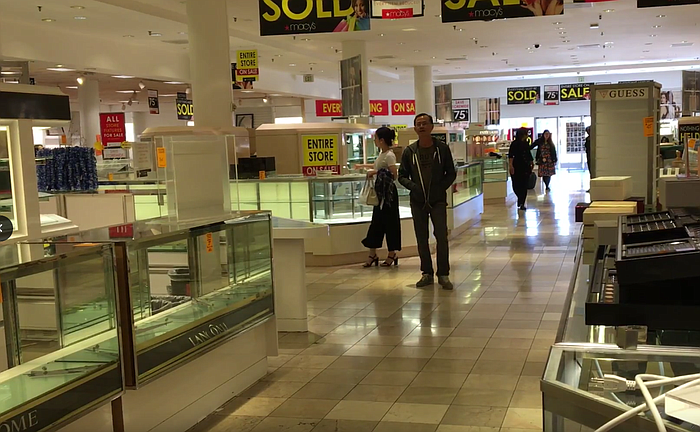Brick and Mortar Grocers, Amazon Believes in You Wholly
June 27, 2017

Guest post by Greg Feinberg, President and CEO of retail experience marketing firm Aisle 9 Group
Amazon’s acquisition of Whole Foods is not an indication that the brick and mortar grocery business is going away. Amazon’s acquisition of Whole Foods is an admission that the grocery business was never going to be overtaken by online retailers. While Amazon took a shot, the fact is, brick and mortar still accounts for over 90% of sales in the clear majority of sectors and virtually 100% of the operating profits. Last year, online shopping accounted for only 2% of the sector’s sales, according to Kantar Retail.
The problem with brick and mortar retail sales, in general, is that retailers forgot to embrace change and ignored the demands of their clients. Shoppers today want a retail experience. They want customization. They embrace innovation and specialization. Too many retailers ignored this and doubled down on their successful strategies from the 1980’s and 1990’s by acquiring similarly bland stores.

Macy’s bought out several of its equally “all things to all people” competitors and now has more poor-performing stores than ever. To make matters worse, these retailers began to invest their capital into e-commerce platforms (where they have no expertise) instead of into their stores, product innovation and improving the shopping experience (where they do have expertise.)
By purchasing Whole Foods, Amazon concedes that consumers will not purchase groceries online. Amazon will not eliminate the retail grocery business as they did to the bookstores. Amazon will focus their innovation and ingenuity to improve the shopping experience of consumers in grocery stores. What Amazon knows is how to sell to their customers. And they know that their customers will continue to go to the grocery store. They also know that grocery stores are not effectively selling to their customers. The grocery store, as we know it, will change. But it will not go away.
The other grocers still have the upper hand in improving the shopping experience and providing innovative and customized products in exciting ways. They have more stores and are closer (geographically) to their consumers. They know the grocery business far better than Amazon or Whole Foods. They have also been selling general merchandise and health and beauty care (HBC) items as well and can also provide a more diverse and interesting shopping experience with non-food & beverage products. However, if grocers continue to act in the same manner and do not embrace change, they WILL be the next bookstores.
Whole Foods has 450 stores, which represents a very small percentage of business—less than 2%. It is time for grocery, drug and mass retailers to reassess how they do business in their stores and how they utilize their valuable brick and mortar space. Amazon spent over $3 million per store for this space. Amazon will not be using drones, and its Prime membership works no differently than every other loyalty card once in the store.
The playing field is level for now. It is time for grocers to aggressively restructure their stores, shopping experiences, inventory, promotions, etc. Amazon will not have their hands tied by:
national brands demanding blind loyalty
restrictive and slow category resets
centralized buying; or
fear of new and experimental products and services.
Grocers and mass retailers that derive significant revenues from groceries must change the way they do business. Shoppers are not moving online as much as they are gravitating to retailers that provide unique products and exceptional shopping experiences. Grocers, therefore, need to rely less on major brands and devote more shelf space to healthier, organic and innovative products. They need to become more international in their offerings, catering to the cultural spectrum of customers that shop in their stores. Buyers must be challenged by executives to look for the most unique products instead of the ones that are simply willing to pay slotting fees. Retailers must look to also lower prices by eliminating third party distributors or at least negotiating margins that do not add another 20 – 25% or more to the delivered prices. Reliance on basic private label brands simply dilutes the shopping experience.
Experientially, stores should re-invigorate their bakeries, customize their butcher shops and staff them with knowledgeable staff members. Coffee kiosks should not be outsourced to the same company that is on every other city block. Tortilla machines and fresh sushi stations can add a dynamic flare. Successful stores of the future will look more like international marketplaces with separate kiosks and sections.
Grocers and food brands, it is your move! You have the home-field advantage. If you are ready to partner with packaging experts and engineers that know how to make your product part of the shopping experience, then call Ernest Packaging Solutions today. We see every industry shift as an opportunity to innovate!
Read more about turning your food packaging into branded works of art:



